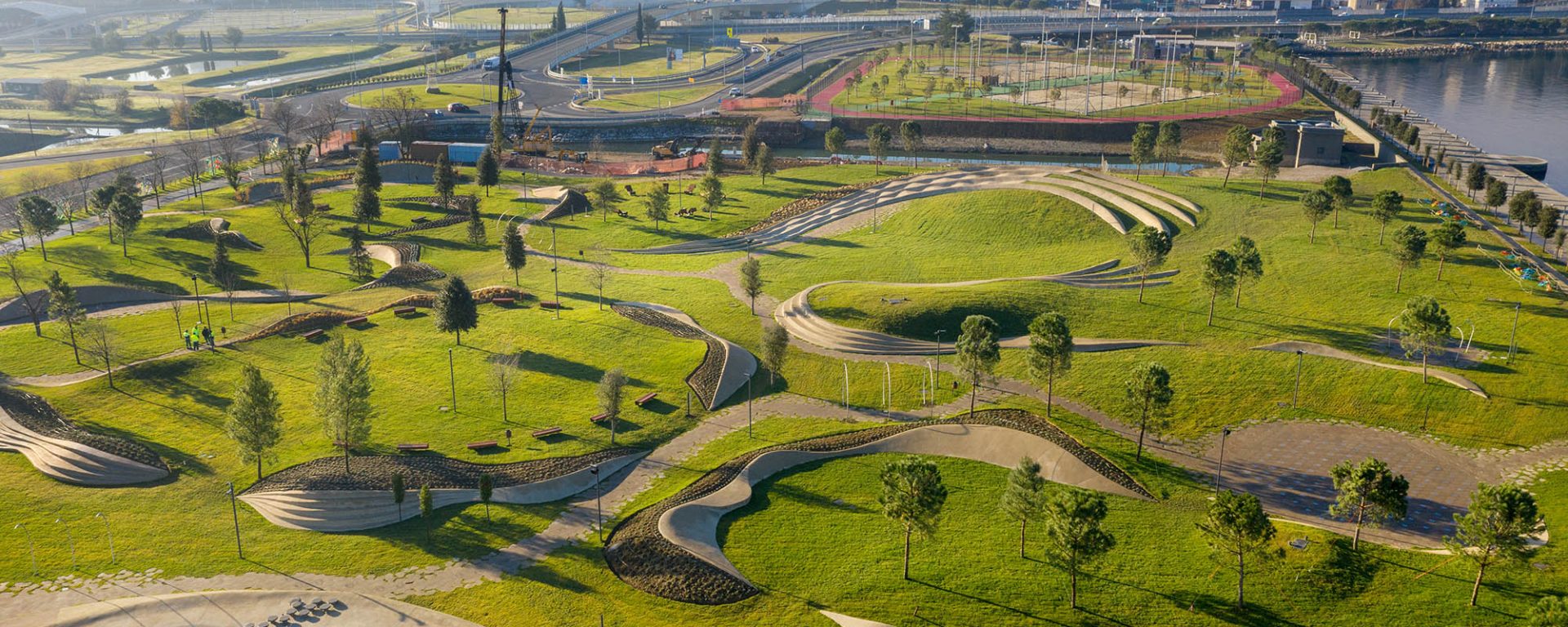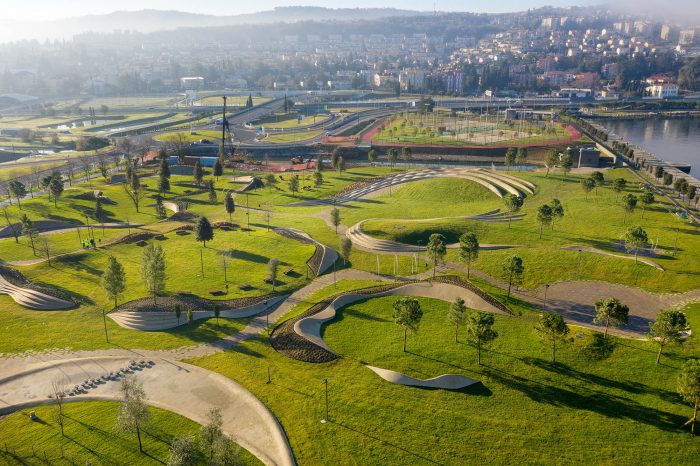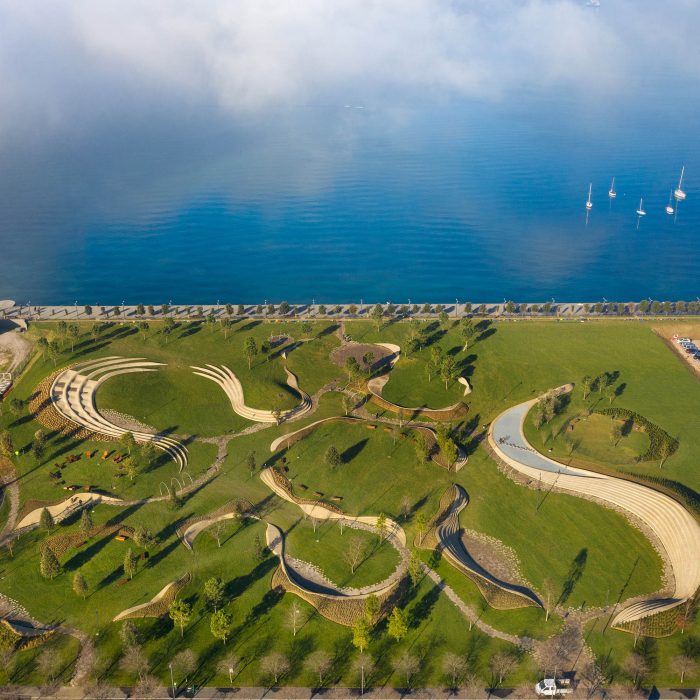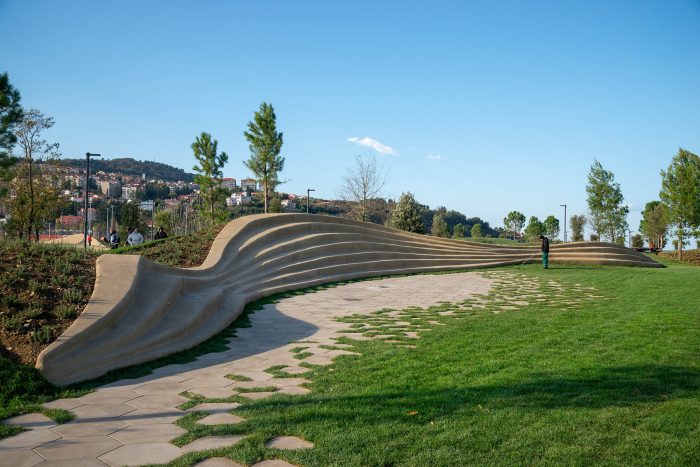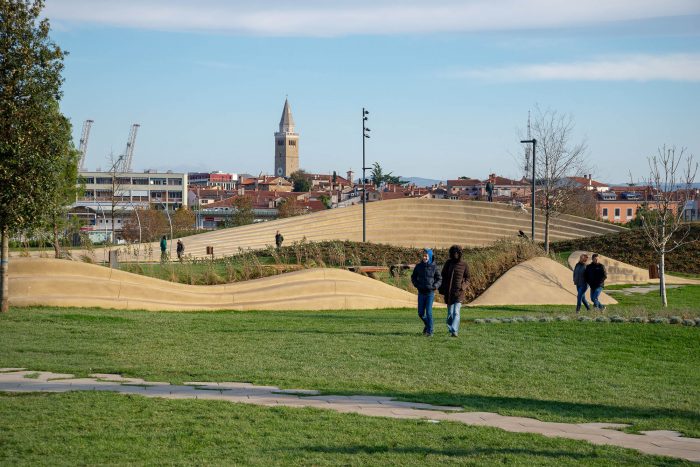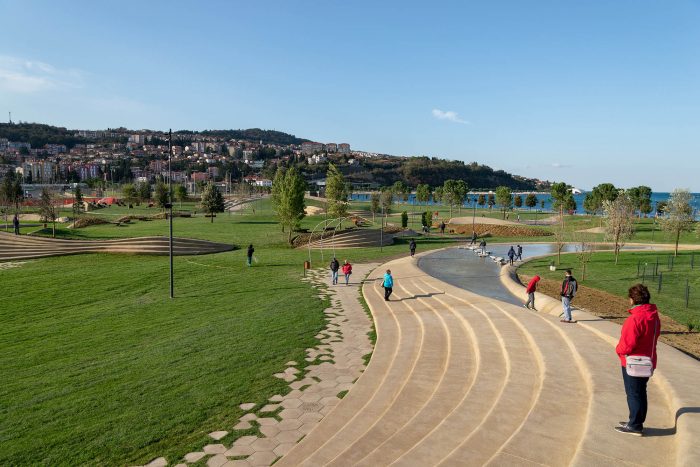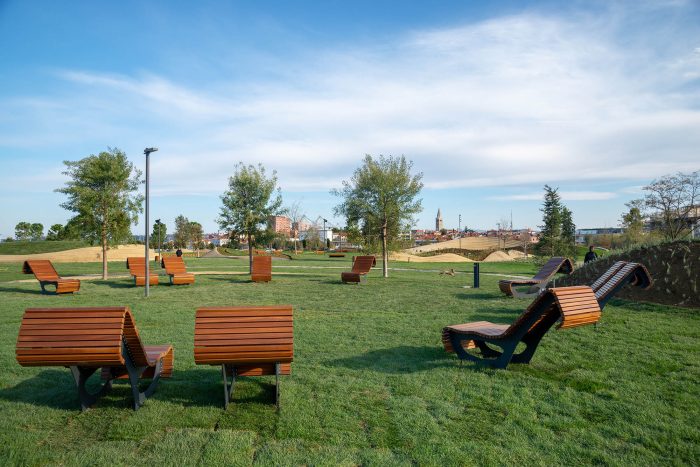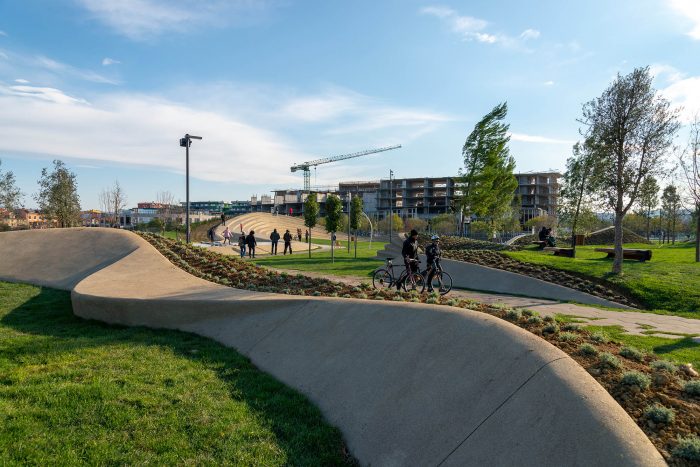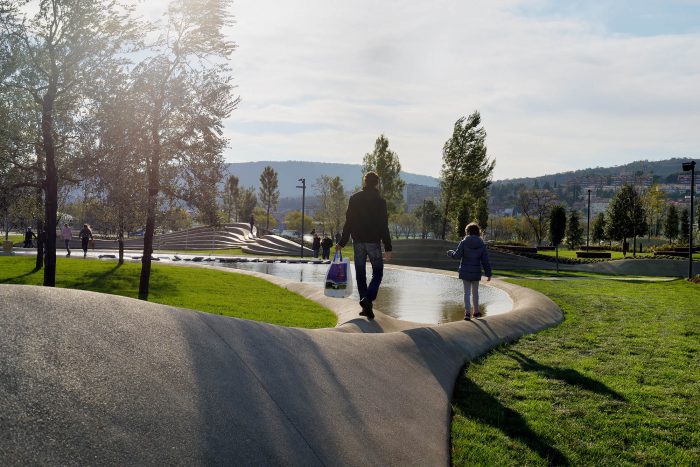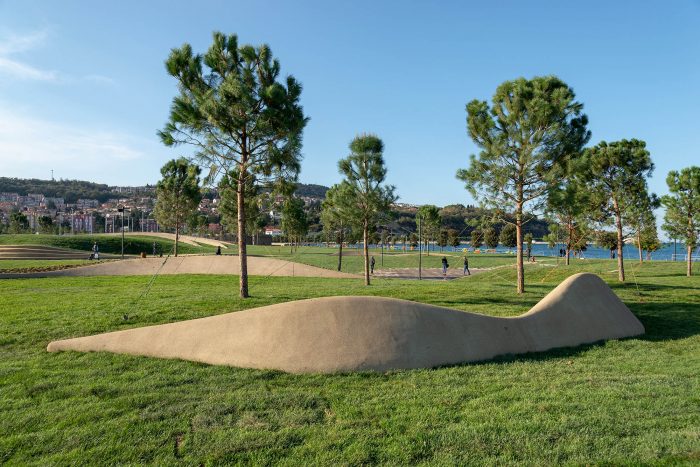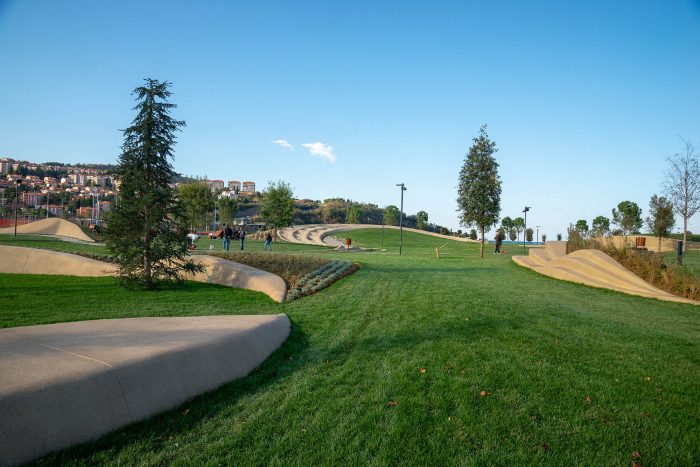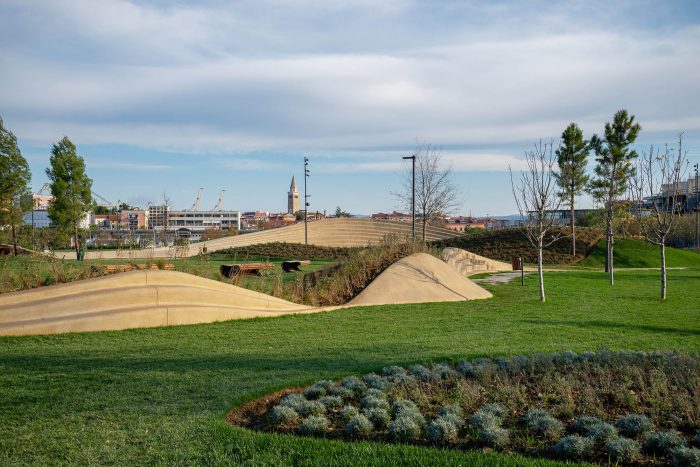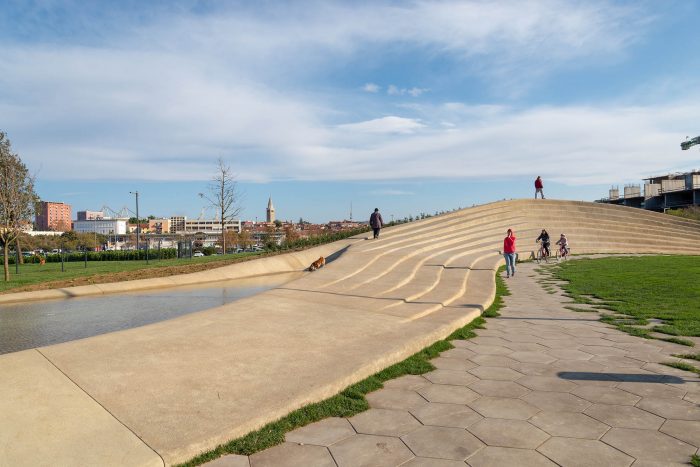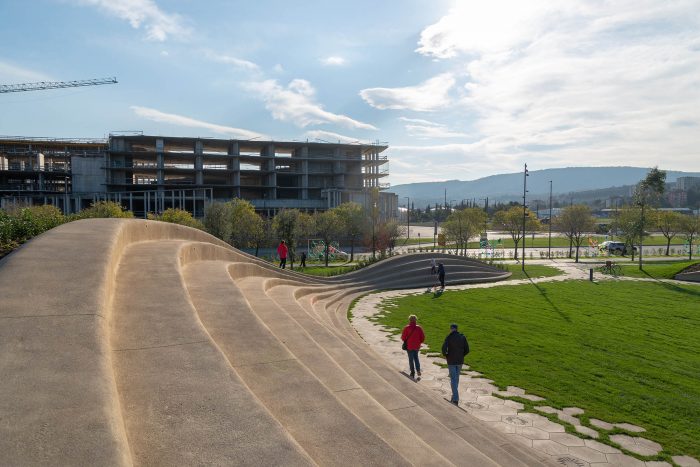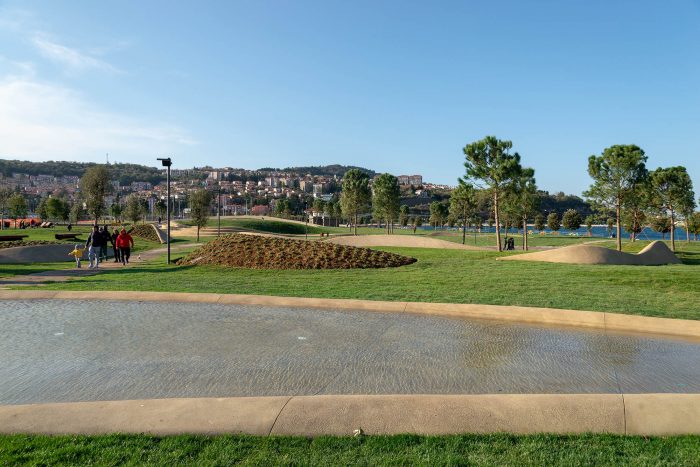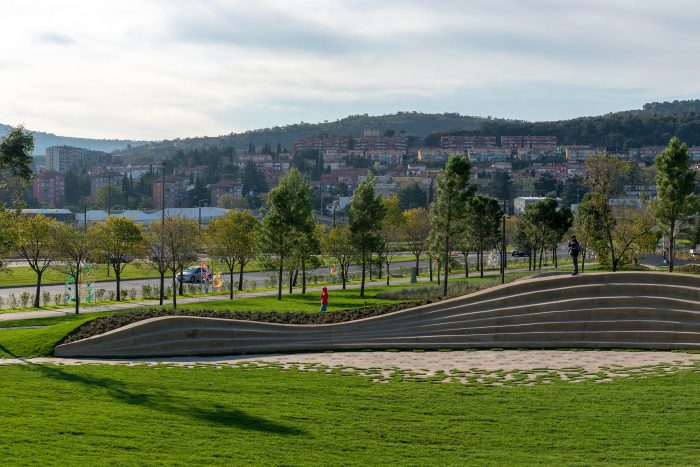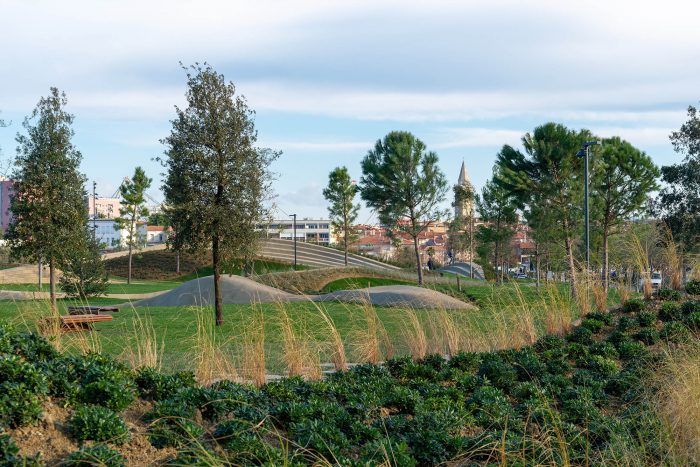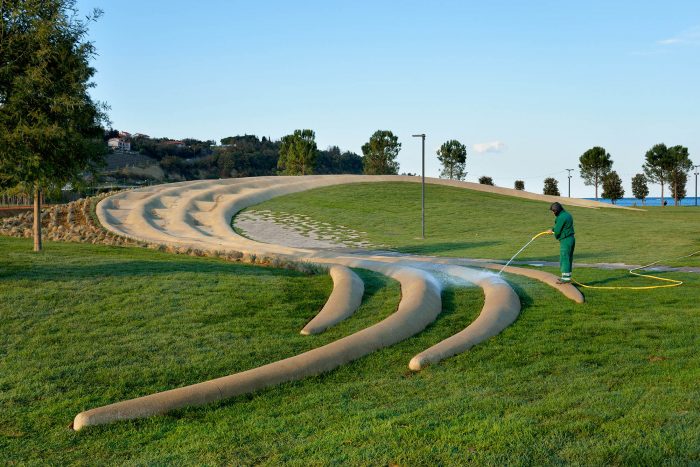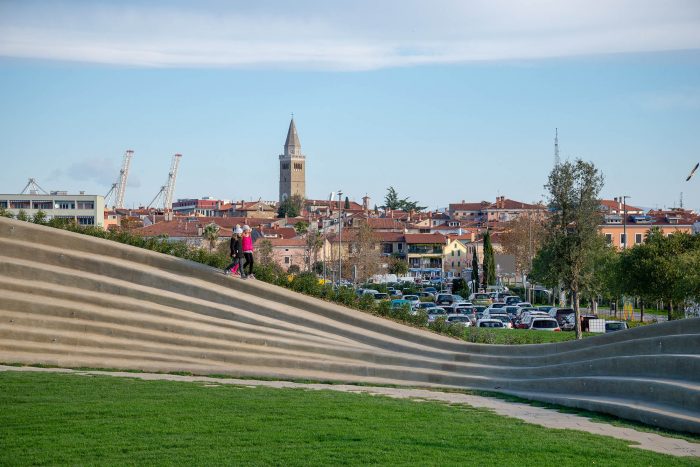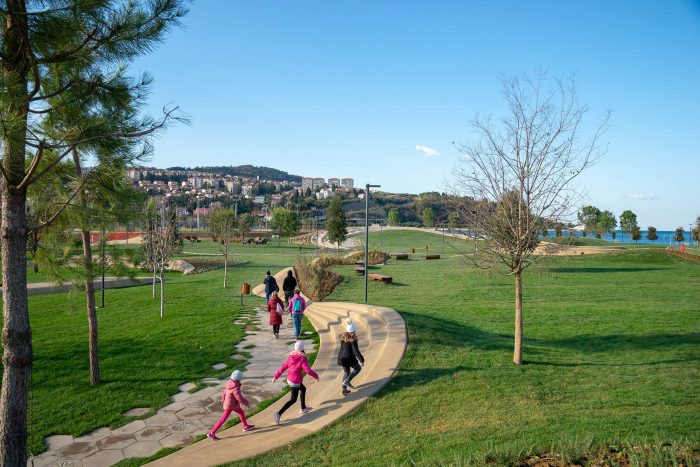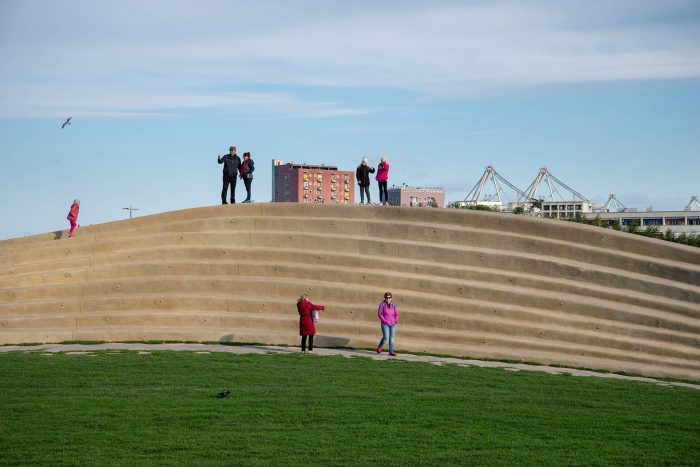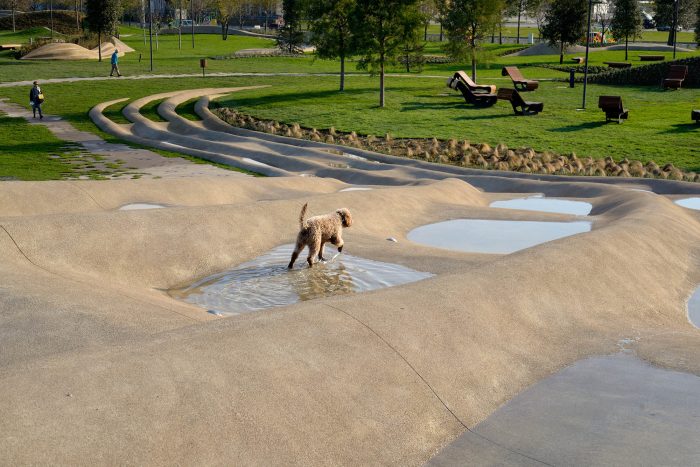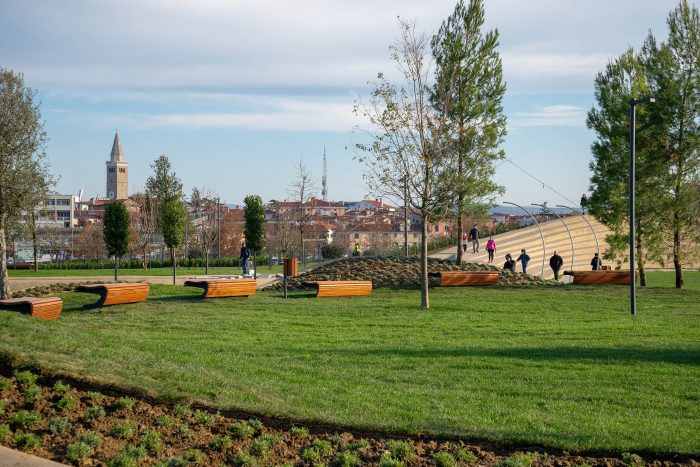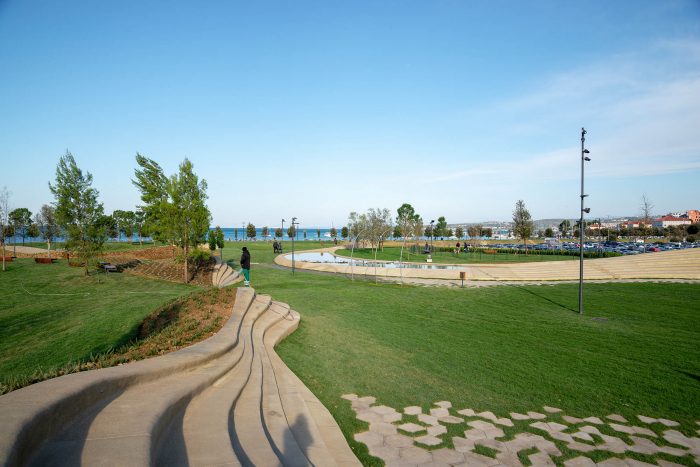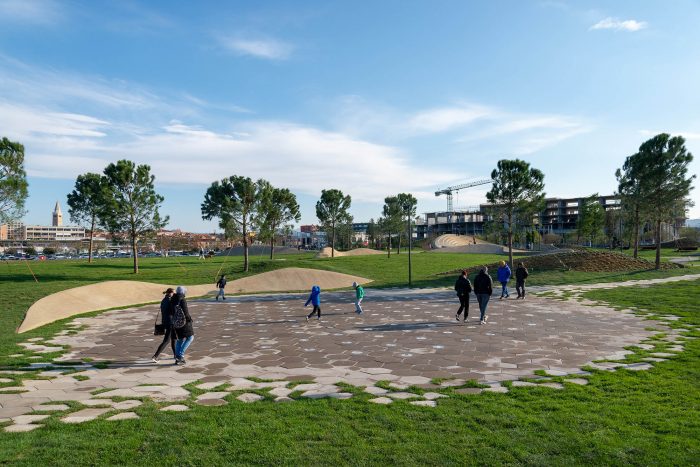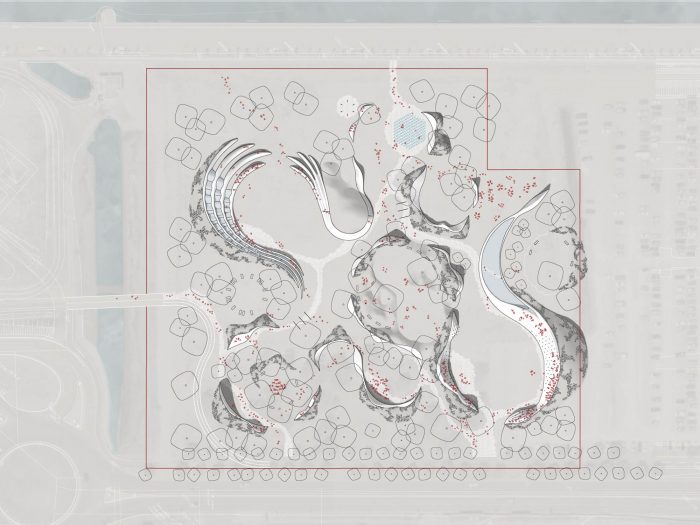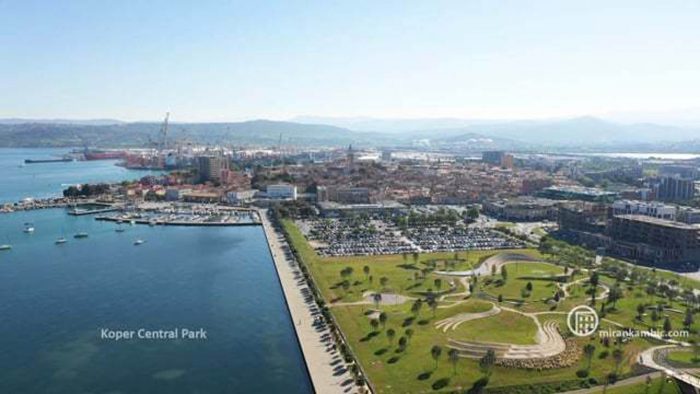根据长廊边的海水将越来越干净的预测,在长廊边出现一个新的城市海滩是可行的。类似的成功案例表明,城市海滩不仅是人们畅游大海的区域,城市海滩还可以成为最重要的自由社交空间。由于密集发展的老城核心区不允许有足够多的大型开放空间,并限制了其面积,而且我们要知道,欢庆的喧嚣、音乐会、深夜活动会打扰到附近的居民,因此,在考虑的区域内设置这样的项目就更合适了。
In line with the prognosis that the sea by the promenade is to grow increasingly cleaner, it is feasible that a new city beach may appear along the promenade. Successful similar examples show that a city beach is not only an area where people take a dip in the sea but that city beaches can become the most important free-time socialising space. Since the densely developed old town core does not allow for a sufficient number of large open spaces and constrains their size, and since we need to understand that convivial bustle, concerts, and late-night events disturb the residents in the immediate vicinity, the placement of such programme in the area under consideration is all the more suitable.
现今的科佩尔的发展形式多种多样–旧城核心区、郊区住宅、前盐池区的商业和服务发展带,以及现代海港所需的所有基础设施的不可避免的存在,都需要一个具有内向形式的空间,使人们能够在视觉上得到放松,但其规模和外在表现力将超越其周围发展的异质性,并将其联系在一起。
The heterogeneous forms of development which characterise present-day Koper – the old town core, the residential suburbs, the commercial and service development belt in the former salt-pond area, and the inescapable presence of all the infrastructure required by a modern seaport call for a space with an inwardly oriented form enabling a visual escape, but whose scale and outward expressiveness would rise above the heterogeneity of development around it and tie it all together.
新的城市公园的面积占了整个场地的很大一部分,因此它的设计可以作为进一步干预的原型。新的干预措施提供了一个统一和有吸引力的外观,其密集的腹地绿化,它淹没了周围建筑结构的异质性。城市海滩和现代城市公园元素的融合,鼓励该地区的居民和游客以不同的方式使用该空间。
The area of the new city park covers a sizeable portion of the wider site and its design can thus serve as a prototype for further interventions. The new intervention offers a uniform and attractive appearance, and with its intensive hinterland greenery, it drowns the heterogeneity of the surrounding built structures. The fusing of the elements of a city beach and a contemporary city park encourages the area’s residents and visitors to use the space in different ways.
新城市公园的基本构件是单体的、起伏的城市元素。它们在空间中的位置受到控制,结合绿化表面的明显地形,柔和地将整个公园的表面划分为单独的内敛的方案岛。各个城市元素的设计始终遵循不同的方案。在一些地方,它们较高,作为一个遮挡景观和周围嘈杂环境的地方;在其他地方,它们较低,允许方案区之间畅通无阻的接触。有机设计的城市元素形成了观众看台、儿童障碍赛、攀岩墙、海边酒吧背景、音乐会场地、儿童游乐场、阅读区等。由于临近大海,节目区布置了众多水元素。池塘、地面喷水装置、喷泉、抛物线喷水装置、瀑布和水平台与多变的城市元素相结合,鼓励人们积极使用空间,并将未来的海滩向公园内部扩展。
The basic building blocks of the new city park are monolithic, undulating urban elements. Their controlled placement in the space in combination with a pronounced topography of the green surfaces softly divides the whole of the park’s surface into individual introverted programme isles. The design of the individual urban elements consistently follows the different programmes. In places, they are taller and act as a shelter from views and the noisy surroundings; elsewhere, they are lower and allow for an unimpeded contact between programme zones. The organically designed urban elements form stands for viewers, an obstacle course for children, climbing walls, a backdrop to a seaside bar, a concert venue, a children’s playground, a reading area, and more. Due to the proximity of the sea, the programme zones are appointed with numerous water elements. A pond, ground sprinklers, a geyser, parabolic water jets, cascades and a water platform in combination with the variegated urban elements encourage active use of the space and an expansion of the future beach towards the interior of the park.
景观设计中的种植部分只布置了地中海本土植被。战略性布置的高大生长物与公园两边现有的树道相辅相成,为各个方案区提供了遮荫,并为公园区域提供了额外的保护,使其免受周围环境的影响。为了鼓励尽可能多地使用其空间的多样性,新的城市公园没有采用传统设计的人行道。草色瓷砖自由排列的交错铺装仅限于入口处和公园内预计会有更多人使用地面的区域。通过这种方式,游客可以定义自己的道路和使用空间的方式。如果公园中增加了新的内容,或者形成了明显的欲望线,这在最初是很难预测的,这种铺装方式可以在以后很容易地重新安排压实的表面。
The planted portion of the landscape design is laid out only with indigenous Mediterranean vegetation. The strategically arranged tall growth complements the existing tree lanes on both edges of the park, gives shade to the individual programme zones, and offers the park area additional protection from the impacts of the surroundings. In order to encourage as much diversity in the use of its space, the new city park doesn’t feature traditionally designed footpaths. Interlocking paving with a free arrangement of grass-coloured tiles is limited to the access points and the sections of the park where a more intensive use of the ground is expected. In this way, the visitors define their own path and their own manner of using the space. In case new content is added to the park, or if obvious desire lines are formed, which is very difficult to predict initially, this manner of paving enables an easy rearrangement of the compacted surfaces at a later time.
城市公园的创新布局对科佩尔市民来说是一笔巨大的新资产,因为它可以发展城市目前无法提供的项目。新公园是一个吸引人的地方,其独特的形式和空间组织方式,超越了单纯的功能性公园。它是进一步设计更广泛地区的原型,也是对目前处于衰败状态的斯洛文尼亚海岸其他地区采取面向发展的态度的动力。
The innovative layout of the city park is a great new asset for the citizens of Koper as it enables the development of programmes which the city presently cannot offer. The new park is an attraction and with its unique form and the manner of spatial organisation, it transcends a merely functional park regulation. It represents a prototype for further designing of the wider area, as well as motivation for development-oriented attitudes in regard to other sections of the Slovene seacoast currently in a state of decay.
建筑师: Enota
面积:26000平方米
年份:2018年
照片:Miran Kambič
制造商:Ares
结构工程师:Ivan Ramšak s.p
MEP:Nom biro
绿植:Spicy Garden
负责建筑师:Enota
设计团队:Dean Lah, Milan Tomac, Gregor Vreš, Peter Karba, Polona Ruparčič, Peter Sovinc, Jakob Kajzer, Carlos Cuenca Solana, Nuša Završnik Šilec, Sara Mežik, Eva Tomac, Goran Djokić
国家:斯洛文尼亚
Architects: Enota
Area: 26000 m²
Year: 2018
Photographs: Miran Kambič
Manufacturers: Ares
Structural Engineer:Ivan Ramšak s.p
MEP:Nom biro
Greenery :Spicy Garden
Architect In Charge:Enota
Design Team:Dean Lah, Milan Tomac, Gregor Vreš, Peter Karba, Polona Ruparčič, Peter Sovinc, Jakob Kajzer, Carlos Cuenca Solana, Nuša Završnik Šilec, Sara Mežik, Eva Tomac, Goran Djokić
Country:Slovenia

